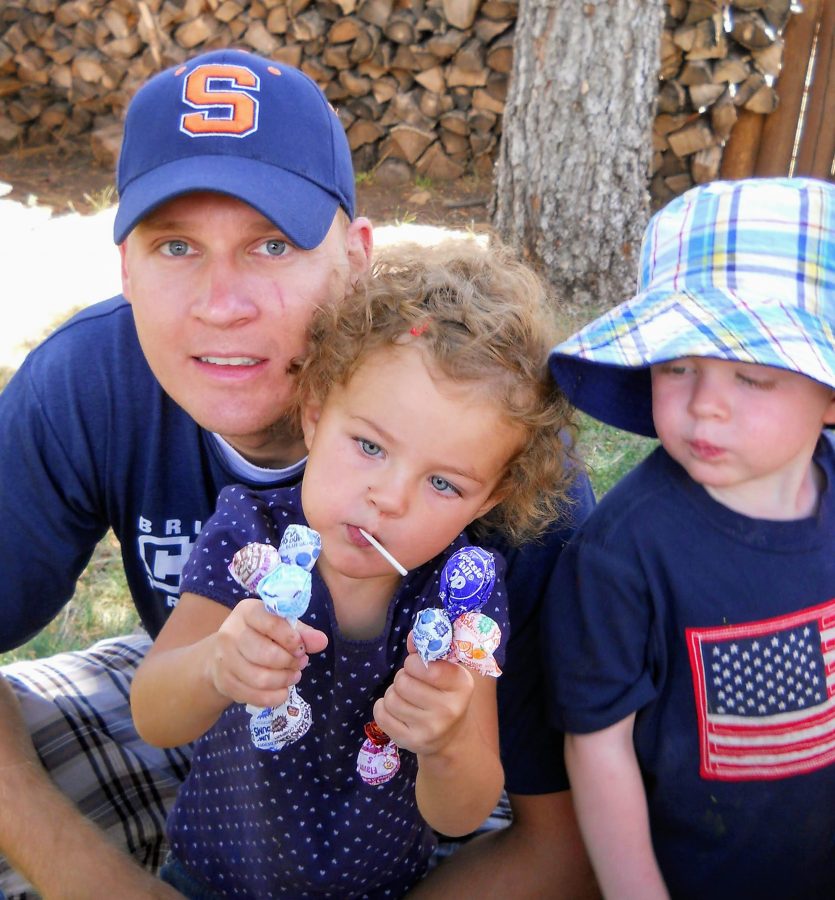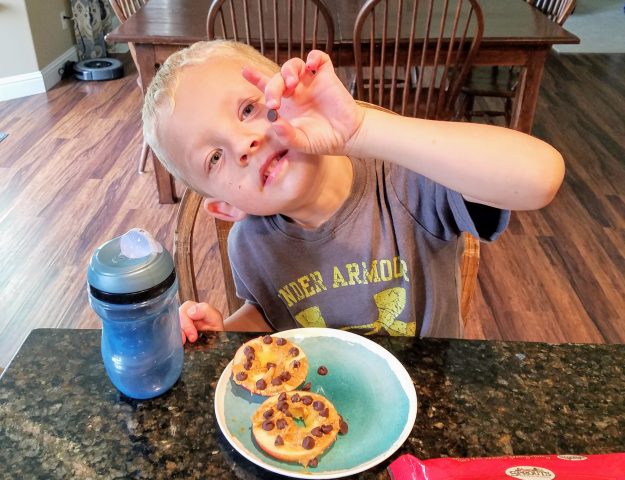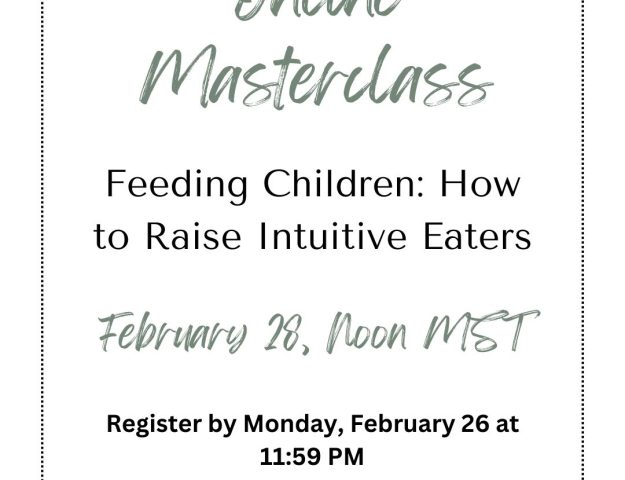Wins and Fails with my Kids and Sugar

I am the first to admit that I have had struggles in the past with sugar. This struggle manifested itself in my children’s ability to self-moderate sweets and other ready-to-eat, snack foods. To paint a better picture, here are a few examples:
At a church activity, popsicles were served to the kids. Apparently, my kids kept going back for seconds… thirds… and even fourths. Because everyone knows I have background with nutrition, they thought it was pretty hilarious that the dietitian’s kids couldn’t control themselves around the sweets.
When we were visiting at a friend’s house, my two youngest helped themselves to their pantry and went to town eating fruit snacks and chips that we don’t normally have in our cupboards. They were fixated on the snacks rather than playing with the other kids.
Neighborhood treat nights, wedding receptions, and extended family gatherings started to get downright embarrassing, because the kids would load their plates with so many cookies and treats I started getting looks and comments from others.
Situations like this made me realize I needed to help my kids. A couple years ago, I actually stopped restricting sweets at home–I actually made a conscious effort to bake twice weekly, so they could appreciate good quality treats. However, I just don’t have the habit of buying lots of ready-to-eat snack foods to stock my cupboards with. This winter, I participated in a collective for women called Eat Confident Collective. I joined it for the sole purpose of learning how to teach my kids to self-moderate sweets. In it, I learned some skills for helping my children enjoy sweets without bingeing on them. The biggest change I made was to start buying foods like candy, chocolate, sweetened breakfast cereals, fruit snacks, animal crackers, and other packaged foods and put them in my cupboards. Talk about total ecstasy coming from the Andersen kids when they saw the loot! They had never seen so many packaged foods in our home without it being a party or special occasion! The point was to start creating familiarity around treats so they wouldn’t be such a novelty anymore. With that, I set some boundaries:
- The sweets were just like any other snack or food in our home–they are to be eaten during a snack or meal time and between those times, the kitchen is closed.
- If I find snack wrappers lying around the house, they got an extra chore that day (a non-food consequence).
- We talked a lot about eating slowly and recognizing their fullness and satisfaction throughout meals and snacks.
- If they felt full/satisfied, it was totally fine to leave a snack half-eaten. Same was true if they were not full or satisfied–it was acceptable to get seconds.
- We only eat food in the kitchen or outside.

Sugar Fails
- For the first couple weeks, the kids were fixated on the snacks in the cupboard. The first thing they did when they returned from school was raid the cupboards. After dinner they begged for more snacks.
- Also in the beginning stages, the kids gobbled up all the snacks within a few days and left wrappers all over. I failed to follow up on the consequence to my own rule and didn’t take the snacks away as promised.
- When my 10-year-old daughter asked for a second helping of cake at her friend’s party, the friend’s mom said, “I don’t think your mom would like that.” (It’s rough being a dietitian’s kid sometimes…) All the other girls were getting seconds, so my daughter spitefully helped herself (three more times) to more cake when the mom wasn’t looking. Needless to say, she had quite the belly ache when she returned home that night.
- The same child was still adjusting to the freedom to choose her snacks. Her tendency was to continue to hide from me while eating sweets. Twice I found a bag of chocolate chips hiding under bed. “What, Mom? I like to eat chocolate chips while I read in bed!” She quipped.
- This was the most embarrassing one: At the pediatrician’s office, two of my kids kept sneaking out of the examination room while I was distracted with the baby. They came back with pockets FULL of Dum-Dums®. The third time they did it, the pediatrician very sternly told them they had had enough and talked to me about teaching them how to eat less sugar.

Sugar Wins
- My awareness of the snacks in the cupboard helped me to be more intentional about preparing after-school snacks for the kids. If there was a plate of cut veggies and dip lying on the counter for them after school, they would forget about the snacks in the cupboard and hone in on what was in front of them.
- The girls and I went to a play one night. During intermission, I took them to get a snack at the concession stand. When deciding what she wanted to get, my oldest daughter said, “Well, I don’t want Red Vines®, because I know I can have them at home.” She chose a cookie instead and after eating half of it, decided she was done and threw the rest away. That was a win for me, because she started understanding that sweets didn’t have to be a feast or famine in our home and she would get to eat them again later.
- At a wedding reception recently, my kids filled their plates with several cookies, cakes, and treats. I was busy visiting with the people at our table, and didn’t pay much attention to what they were eating. A few times my 6-year-old would take a bite and say, “I don’t like this.” My response was, “That’s fine. You don’t have to finish it.” She moved on to another treat and said the same thing again two times before she went off to play with her siblings. As I picked up their plates a while later, there were four dessert plates with several items uneaten and only picked at. My old self would have been disappointed that they wasted so much food. My new self happily threw away the leftovers realizing they enjoyed the treats at the moment and moved on to go play–not obsessing or worrying about never getting treats again.
“Normal eating is being able to choose food you like and eat it and truly get enough of it — not just stop eating because you think you should…It is leaving some cookies on the plate because you know you can have some again tomorrow, or it is eating more now because they taste so wonderful.”
@ellyn_satter_institute
Overall, this was a really interesting process–and it continues to evolve. Our family still isn’t perfect intuitive sugar-eaters. There are still times when I slip up and say something negative about the amount of sugar the kids eat. I still find snacks and sweets hidden in closets or under beds now and then. But, we are all getting better. The failures are turning into wins, because there are lessons learned with each one and progress is happening.
Resources for Feeding Children
(Includes Affiliate Links)




